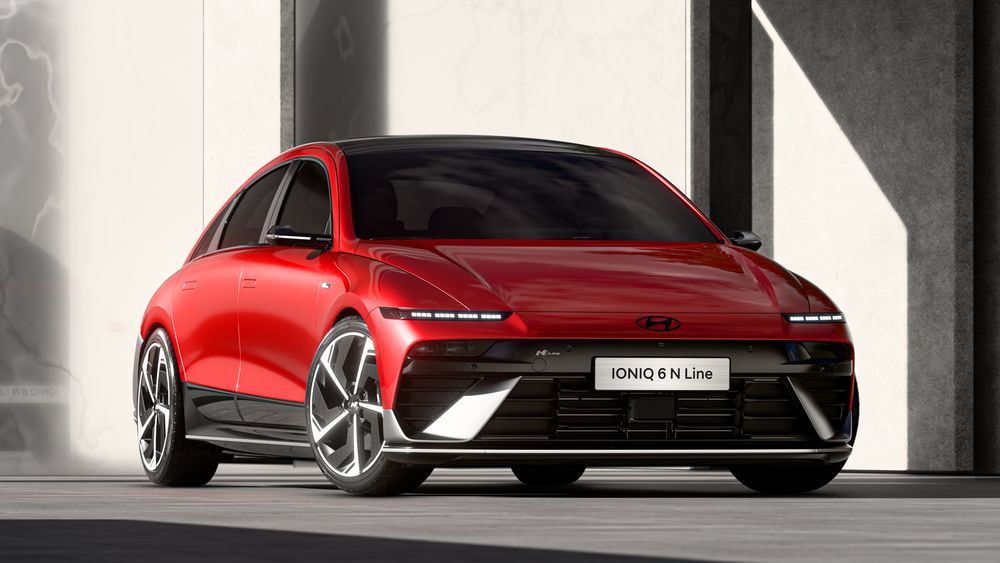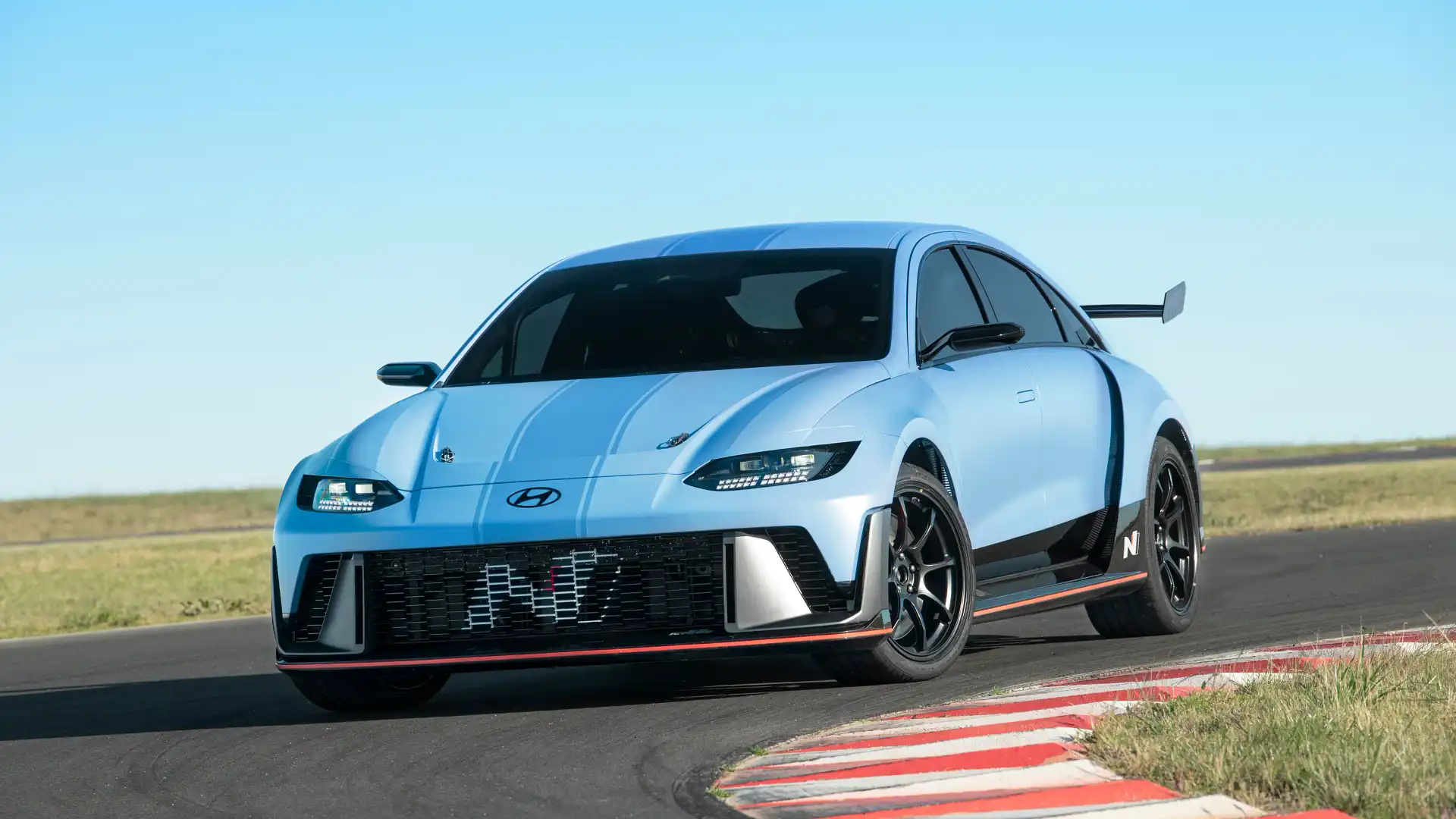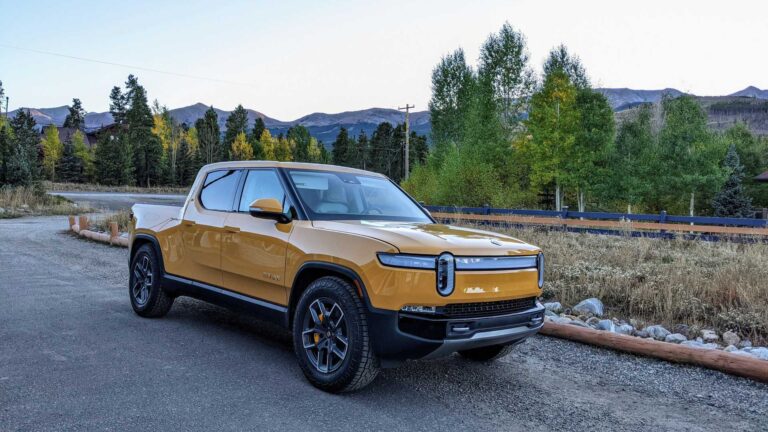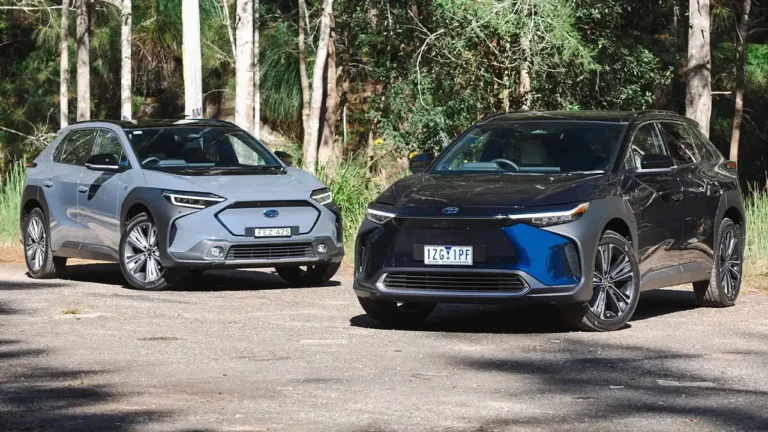
Hyundai Ioniq 6 N 2
Few automobiles manage to balance everyday practicality with genuine driver engagement more effectively than a sport sedan. Offering greater utility than coupes while remaining less bulky than SUVs, high-performance four-door vehicles combine practicality and dynamic prowess to satisfy both the hearts and minds of driving enthusiasts.
A new contender is virtually revving up to enter this prestigious category: the 2026 Hyundai Ioniq 6 N. This is a riotously fun and intensely focused model developed specifically to rival established icons from Europe, Japan, and the United States, that is, if traditional, gas-huffing purists can be persuaded to look past the plug.
Having now had the opportunity to drive the Ioniq 6 N on public roads and at a racetrack, take it from us: You will definitely want to.
Once considered a bit frumpy, the entire Hyundai Ioniq 6 lineup gains a far bolder countenance with its 2026 update. The new look nearly transforms this electric vehicle, as its formerly wide-eyed headlights narrow into an LED-accented glower.
Below, the grille opens up into a performance-implying maw that is showcased on the new N Line trim, which is essentially a styling package. The full-fat Ioniq 6 N (with no ‘Line’) cranks up the visual aggression even further, but more than just appearing fast, it has been extensively modified, actually, to go fast, too.
Primary among those shared mechanicals is the dual-motor powertrain, which delivers 641 hp and 568 lb-ft of torque in short bursts (it is rated at 601 hp and 545 lb-ft under normal conditions). An electronically controlled, limited-slip differential optimizes traction at the rear axle.
However, do not think for even the brief moment it takes to sprint to 60 mph, likely less than 3.0 seconds, that the Ioniq 6 N is merely an electric muscle car.
Its chassis has been thoroughly revised with adaptive suspension dampers, hydraulic bushings, and additional structural adhesive to enhance driver feel and precision. Bespoke wheels spin beneath its widened bodywork, and appropriately large brakes are fitted to haul it down from speed.
Do not think, either, that the Ioniq 6 N is simply a sedan-ified version of the Ioniq 5 N. In comparison to its crossover counterpart, the 6 N features bracing struts between the trunk and the back seats to increase torsional rigidity.
Although the ground clearance is identical between the two models, the 6 N’s lower overall height contributes to a roll center approximately 4 inches below that of the 5 N.
There is also the distinctive swan-neck rear wing, which the 5 N lacks; this aerodynamic element can generate more than 200 pounds of downforce at a top speed of about 160 mph.
Hyundai states that it attempted to give the 6 N a different character than the 5 N: less wild and playful, and more grip-oriented to provide added control and precision both on the track and off.
A configurable drift mode in the 6 N ensures that things will never feel too stoic if you so desire, as if that could possibly be a concern for a vehicle as inherently spirited as this one.
Sports cars were once simple machines, their dynamic character defined primarily by their hardware. That is no longer the case. Of course, metal still matters greatly, but now, endless reams of software code are often just as vital, if not more so, to shaping a car’s tangible driving properties.
In the Ioniq 6 N, that technology can sometimes feel overwhelming. There is a vast array of settings: multiple levels for motor response, steering weight, suspension firmness, differential behavior, and stability control leniency.
Each of these can be tuned independently. That is all before you even get to features like N Torque Distribution or N Pedal, which let you adjust the front/rear torque balance and the regenerative braking strength.

While there is theoretically a finite number of configuration possibilities, it would take far more time than we had available to find the single perfect one. That is of little concern, though, since the Ioniq 6 N is tremendously fun regardless of how it is set up.
Operating as the EV it is, torque arrives instantly and power sustains robustly up to high speeds; the straight between Turns 3 and 4 of the Korea International Circuit, which we had the pleasure of attacking in the 6 N, was not long enough to exhaust its acceleration.
As with any EV on Hyundai’s now ubiquitous E-GMP platform, the acute regenerative braking capability allows for a satisfying flow between curves simply by modulating the accelerator pedal.
Like the Ioniq 5 N, however, the 6 N offers an amazing trick: it can imitate a combustion car. Press a button, and the electric motors recalibrate to feel like a traditional engine, with a surge that rises across a defined powerband.
A virtual tachometer appears on the display, and the steering wheel’s paddle shifters now change simulated gears that dictate how acceleration is delivered. If you do not upshift, it will bounce off a synthetic rev limiter; if you do not downshift, it will lug. It will even deny downshifts at high rpm, lest you over-rev the engine it does not actually have.
Hyundai programmed the 6 N’s virtual “transmission” to have tighter gear spacing than the one in the 5 N. The effect is that of a close-ratio eight-speed gearbox that encourages constant paddle slapping.
This experience is optionally accompanied by one of three digital exhaust notes, adding an audible reference point to promote focus on the road as it rushes toward the driver.
It is uncannily good and fantastically fun. Even so, this delightful gimmick raises philosophical questions about what the Ioniq 6 N (and the 5 N, for that matter) is trying to be, and why it tries to fake being something it is not. Other electric sport sedans achieve greatness without resorting to such tricks.
That said, if you prefer, you can turn it all off and still have a fantastic time. Focusing purely on the 6 N experience itself, perhaps the only thing missing is an engine-like vibration to accompany the sound and feel, which would make the simulation even more convincing.
How that rubber gets worked relates directly to the 6 N’s weight, which is likely slightly less than the 5 N but still hefty at an estimated 4,600 pounds.
The car hides this mass remarkably well, changing direction eagerly as its adaptive suspension dampers do an excellent job of eliminating the more pronounced body motions that can affect the standard Ioniq 6. Poise is the predominant handling sensation, even as it rides with a firmness that is entirely appropriate for a performance car.
Range is the Ioniq 6 N’s main compromise. Expect a figure better than the 224 miles we recorded in the Ioniq 5 N, perhaps coming closer to Hyundai’s claimed 240-mile estimate, but still short of ideal for long-distance journeys.
While driving flat out at the Korea International Circuit, we watched the 84.0-kWh battery’s state of charge plummet lap by lap, accompanied by a noticeable drop in power output as the laps piled up.
Recharging performance is less of a concern. E-GMP-based vehicles are well-known for how quickly they gain electrons, provided your favorite canyon road or local racetrack has a fast charger located nearby.
These issues are not specific to the Ioniq 6 N; they are endemic to battery-powered vehicles in general. Where the 6 N truly separates itself from other EVs is with the endless entertainment it provides, achieved not only through superb driver engagement but also via numerical performance that will wallop some of the most celebrated gas-powered sport sedans on the market.
We cannot wait to get it in for proper testing. According to Hyundai, the car will be available in “limited quantities” in the United States; what exactly that means remains unclear.



